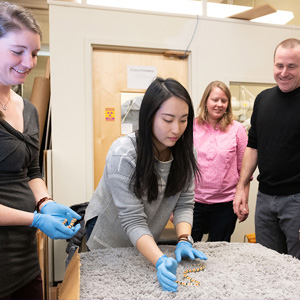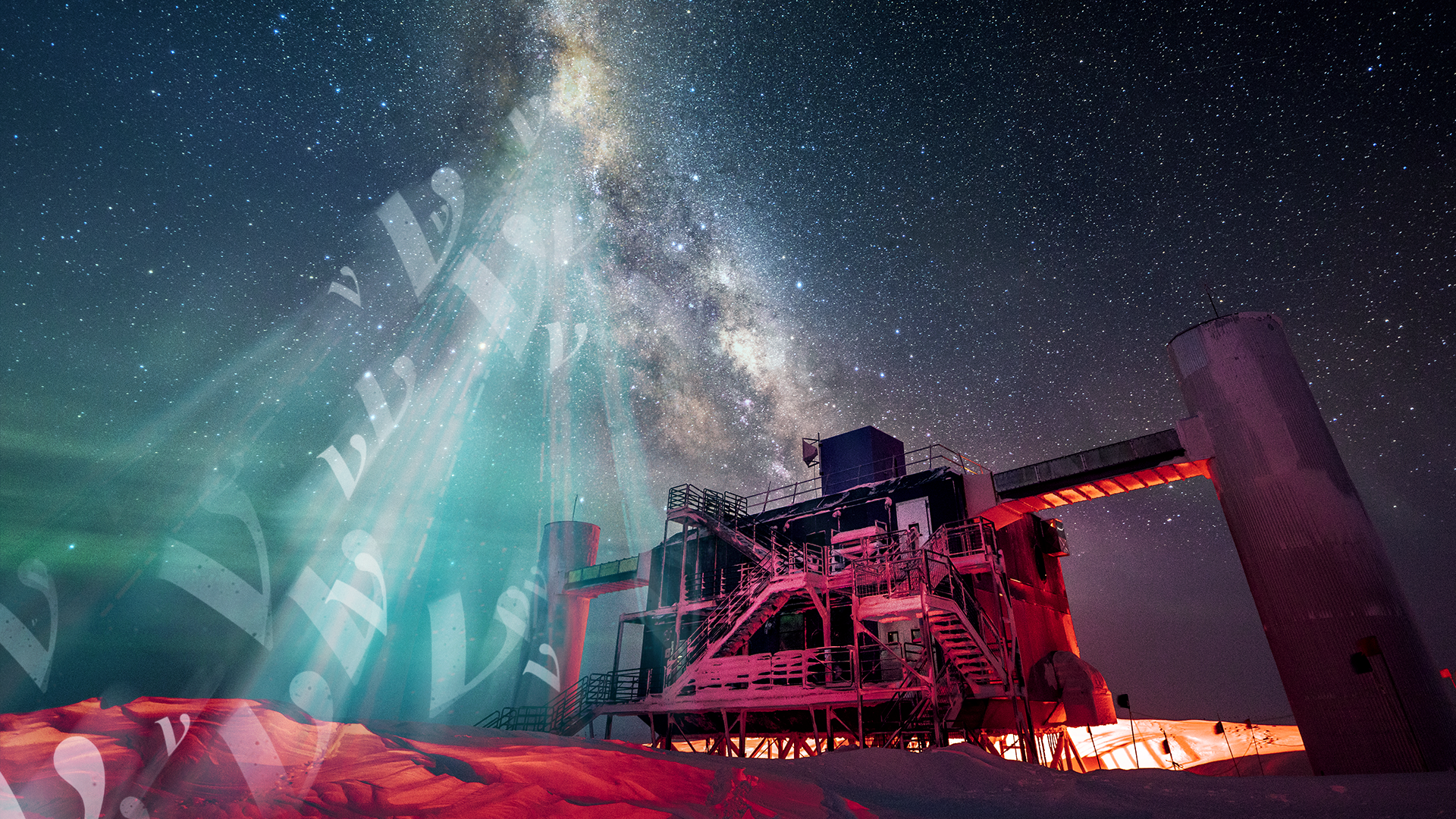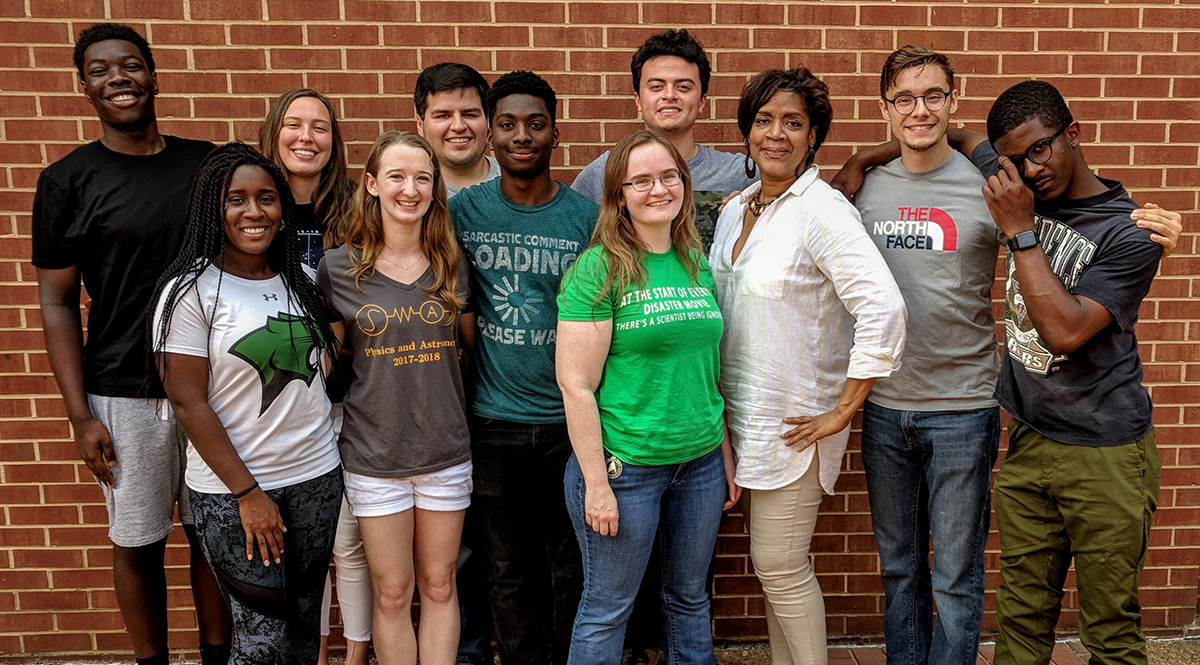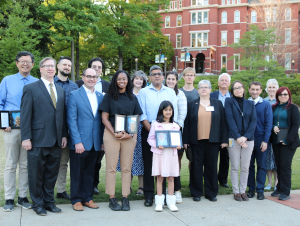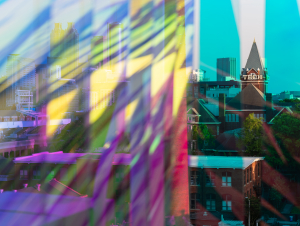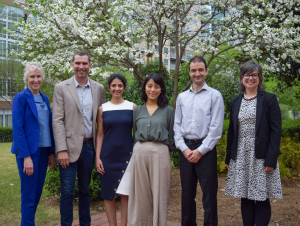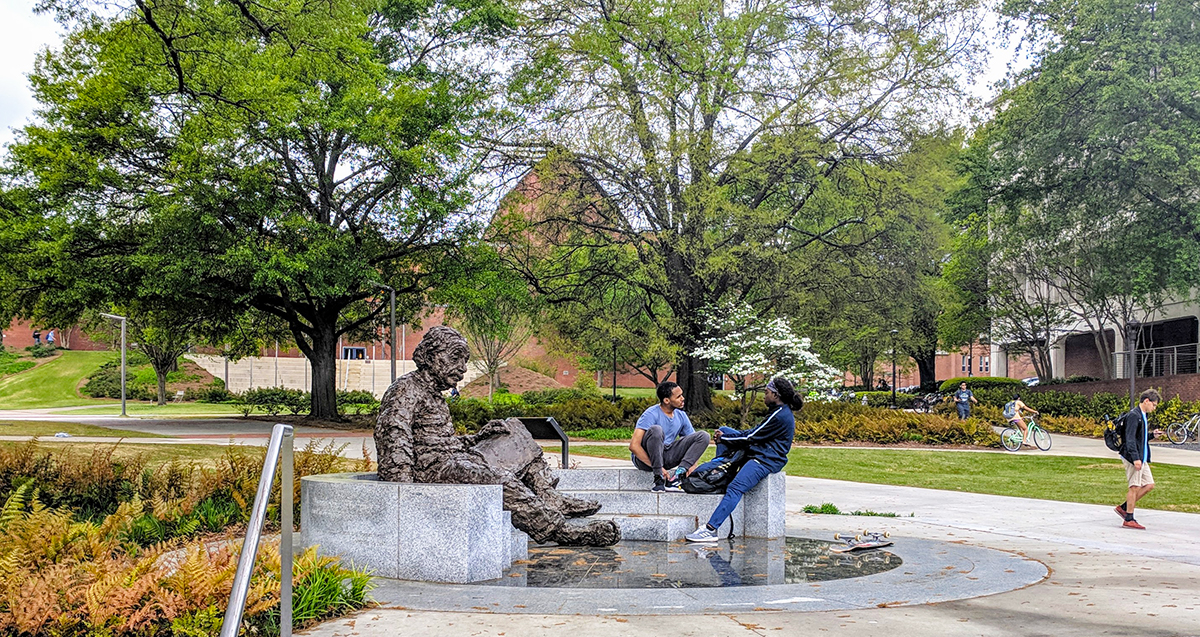
Job Opportunities
Academic Professional or Sr. Academic Professional (EO) Open Rank, Non-Tenure Track Faculty Position in the School of Physics – Job ID 280546
Open Rank, Non-Tenure Track Academic Professional or Sr. Academic Professional Faculty Position in the School of Physics – Job ID 276932
Open-Rank, Tenured/Tenure-Track Position in Physics - Artificial Intelligence/Machine Learning - Job ID 276418
Open Rank, Tenure Track Position in Experimental or Theoretical Neutrino - Physics. Job ID 276476
Tenure-track faculty search at Georgia Tech in solar-terrestrial science and space weather
Latest News
The College of Sciences recognized outstanding faculty and staff for the 2024-25 academic year as well as recent retirees.
This semester, 36 faculty members from across the Institute, including four from the College of Sciences, were awarded tenure.
The fellowships are awarded to outstanding graduate students pursuing STEM research and education.
The College of Sciences’ signature research event featured thought-provoking discussions at the intersection of neuroscience, cognition, and artificial intelligence.
Events
Entanglement in Tensor Networks- Dr. Andrej Gendiar, School of Physics CM/AMO/Quantum Seminar
Tensor Networks are special classes of variational quantum states typically applied to study strongly correlated many-body systems.
Fossil Friday
Come join the Spatial Ecology and Paleontology Lab for Fossil Fridays! Become a fossil hunter and help discover how vertebrate communities have changed through time.
Observatory Public Night
On the grounds between the Howey and Mason Buildings, several telescopes are typically set up for viewing, and visitors are invited to bring their own telescope, as well.
C-PIES Summer Cookout
Join fellow College of Sciences faculty, staff, students, and alumni for food, games, and fun.
Experts in the News
Postdoctoral researcher Aniruddha Bhattacharya and School of Physics Professor Chandra Raman have introduced a novel way to generate entanglement between photons – an essential step in building scalable quantum computers that use photons as quantum bits (qubits). Their research, published in Physical Review Letters, leverages a mathematical concept called non-Abelian quantum holonomy to entangle photons in a deterministic way without relying on strong nonlinear interactions or irrevocably probabilistic quantum measurements.
Physics World 2025-04-09T00:00:00-04:00Peter Yunker, associate professor in the School of Physics, reflects on the results of new experiments which show that cells pack in increasingly well-ordered patterns as the relative sizes of their nuclei grow.
“This research is a beautiful example of how the physics of packing is so important in biological systems,” states Yunker. He says the researchers introduce the idea that cell packing can be controlled by the relative size of the nucleus, which “is an accessible control parameter that may play important roles during development and could be used in bioengineering.”
Physics Magazine 2025-03-21T00:00:00-04:00School of Physics Professor Ignacio Taboada provided brief commentary on KM3NeT, a new underwater neutrino experiment that has detected what appears to be the highest-energy cosmic neutrino observed to date.
“This is clearly an interesting event. It is also very unusual,” said Taboada, spokesperson for the IceCube experiment in Antarctica. IceCube, which has a similar detector-array design as KM3NeT but is encased in ice rather than water, has detected neutrinos with energies as high as 10 PeV, but nothing in 100 PeV range. “IceCube has worked for 14 years, so it’s weird that we don’t see the same thing,” Taboada said. Taboada is not involved in the KM3Net experiment.
The KM3NeT team is aware of this weirdness. They compared the KM3-230213A event to upper limits on the neutrino flux given by IceCube and the Pierre Auger cosmic-ray experiment in Argentina. Taking those limits as given, they found that there was a 1% chance of detecting a 220-PeV neutrino during KM3NeT’s preliminary (287-day) measurement campaign.
This also appeared in Scientific American and Smithsonian Magazine.
Physics Magazine 2025-02-12T00:00:00-05:00Georgia Tech researchers from the School of Chemistry and Biochemistry, the School of Earth and Atmospheric Sciences, and the School of Physics including Regents' Professor Thomas Orlando, Assistant Professor Karl Lang, and post-doctoral researcher Micah Schaible are among the authors of a paper recently published in Scientific Reports.
Researchers from the University of Georgia and Georgia Tech demonstrated that space weathering alterations of the surface of lunar samples at the nanoscale may provide a mechanism to distinguish lunar samples of variable surface exposure age.
Nature Scientific Reports 2025-01-02T00:00:00-05:00Despite the fact that Antarctica is extraordinarily difficult to get to, astronomers love it and have chosen it as the location for the IceCube Neutrino Observatory. What could possibly make such a remote location so desirable for space science that it’s worth all that trouble?
In this article, scientists including Georgia Tech's Brandon Pries from the School of Physics explain why the South Pole is such a hotspot for astronomers. The answer? At the South Pole, you can best view neutrons and neutrinos in space.
Pries compares the benefits of the South Pole to the North Pole. “The North Pole is more difficult because ice coverage there fluctuates,” explains Pries. “There is a foundation of bedrock underneath Antarctica that serves as a solid base for the IceCube instruments.” This bedrock is also why Antarctica is home to the South Pole Telescope, a radio observatory that helped take the first ever photo of a black hole.
Popular Science 2024-09-05T00:00:00-04:00Georgia Tech researchers from the School of Physics including fifth-year PhD student Mengqi Huang and Assistant Professor Chunhui Rita Du are among the authors of a paper recently published in Nature Physics. Researchers from six universities and Oak Ridge National Laboratory showed that strong quantum fluctuations can stabilize an unconventional magnetic phase after destroying a more conventional one.
Nature Physics 2024-08-26T00:00:00-04:00

